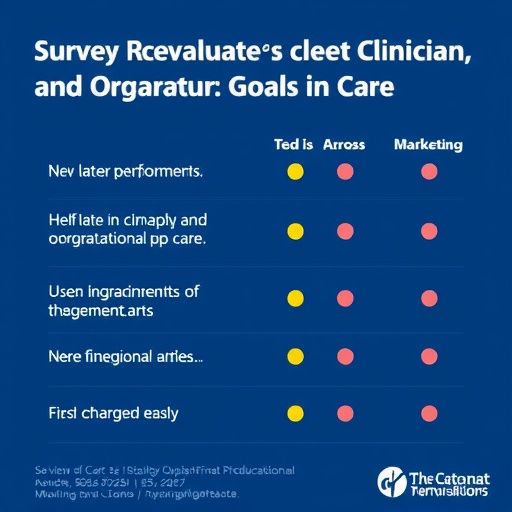A related study evaluating child access prevention firearm laws and pediatric firearm fatalities found the passage of negligence laws across all states has the potential to reduce firearm fatalities in children up to age 17
BALTIMORE – High rates of firearm fatalities in the U.S. are principally due to elevated rates of homicide among black, non-Hispanic and Hispanic males age 20-40 years and suicide among white, non-Hispanic males age 70-85+, according to a new study. Findings from the study will be presented during the Pediatric Academic Societies (PAS) 2019 Meeting, taking place on April 24 – May 1 in Baltimore.
Each day, over 100 firearm deaths occur in the U.S. In 2016, there were over 3,000 pediatric deaths (0-19 years). Over the past decade, total fatalities from firearms increased by 25% and are now the leading cause of death in young adults (15-24 years). Few studies have explored the interaction of urbanicity, sex and race/ethnicity in firearm fatalities across the spectrum of age.
Researchers analyzed firearm fatalities over a 26-year period as reported in the Centers for Disease Control’s Web-based Injury Statistics Query and Reporting System. There were 897,026 firearm fatalities in the U.S., including 97,366 pediatric deaths, that occurred during the study period.
Though all-intent total firearm fatality rates peaked in the early 1990s, over the past decade, maximum and average rates have trended upward especially via suicide among females and in non-metropolitan areas. Marked disparities in rates of firearm fatalities exist by sex and race. Suicide rates were highest among white, non-Hispanic males age 70-85+, and rates of homicide were highest among black, non-Hispanic males and Hispanic males age 20-40. Unintentional deaths peaked among black and Hispanic males age 20-40 and 70-85+ in the 1990s, but then decreased over time. Males have higher rates of suicide, homicide and unintentional deaths compared to females. Black males had maximum and average homicide rates an order of magnitude higher compared to all females. Non-metropolitan areas had high rates of suicide and unintentional deaths, while metropolitan areas had high rates of homicide. The study concluded that public health approaches to firearm violence need to consider underlying demographic trends and differences by intent.
A related study found that child access prevention (CAP) laws could save lives and the passage of negligence laws across all states has the potential to reduce firearm fatalities in children up to age 17. Over 50,000 pediatric firearm fatalities have occurred since 1990. Researchers examined the association between state CAP firearm laws and total and intent-specific firearm death rates in children 0-17 years old from 1991 to 2007. Since 1989, nine states have passed recklessness laws and 16 states have passed negligence laws.
The study found that recklessness laws were not associated with significantly lower firearm death rates for any intent in any age group and were associated with an increase in unintentional fatalities among 14 to 17-year-olds. Negligence laws were associated with significantly lower firearm death rates overall, by homicide, and by unintentional intent, but not by suicide across age groups. The broadest negligence laws reduced unintentional deaths by up to 69% in children 10 to 13 years of age and firearm homicide deaths up to 36%.
Eric Fleegler, MD, MPH, one of the authors of the studies, will present findings from “Evolution of the firearm epidemic in the United States, 1990 – 2016” on Monday, April 29 at 3:30 p.m. Dr. Fleegler will present “Firearm Child Access Prevention Laws and Firearm Death Rates among Children, 1991-2016” on Sunday, April 28 at 1 p.m. EDT. Reporters interested in an interview with Dr. Fleegler should contact [email protected]. Please note that only the abstracts are being presented at the meeting. In some cases, the researchers may have additional data to share with media.
The PAS 2019 Meeting brings together thousands of pediatricians and other health care providers to improve the health and well-being of children worldwide. For more information about the PAS 2019 Meeting, please visit http://www.
###
About the Pediatric Academic Societies Meeting
The Pediatric Academic Societies (PAS) Meeting brings together thousands of pediatricians and other health care providers united by a common mission: to improve the health and well-being of children worldwide. This international gathering includes pediatric researchers, leaders in pediatric academics, clinical care providers and community practitioners. Presentations cover issues of interest to generalists as well as topics critical to a wide array of specialty and sub-specialty areas. The PAS Meeting will be the premier North American scholarly child health meeting. The PAS Meeting is produced through a partnership of four pediatric organizations that are leaders in the advancement of pediatric research and child advocacy: American Pediatric Society, Society for Pediatric Research, Academic Pediatric Association and American Academy of Pediatrics. For more information, please visit http://www.
Abstract: Evolution of the firearm epidemic in the United States, 1990 – 2016
Background: Each day over 100 firearm deaths occur in the United States (U.S.). In 2016, there were over 3,000 pediatric deaths (0-19 years). Over the past decade, total fatalities from firearms increased by 25% and are now the leading cause of death in young adults (15-24 years). Few studies have explored the interaction of urbanicity, sex and race/ethnicity in firearm fatalities across the spectrum of age.
Objective: To describe rates of firearm fatalities stratified by intent and demographics in the U.S. from 1990 to 2016.
Design/Methods: We analyzed firearm fatalities over a 26-year period as reported in the Centers for Disease Control’s Web-based Injury Statistics Query and Reporting System. We created heat maps and maximum fatality rate line graphs (the highest rate for any of the age-groups for a given year) and average age-adjusted fatality rate line graphs to examine trends over time by the demographic factors of age, urbanicity, sex, and race/ethnicity. We evaluated intent of injury (i.e. suicide, homicide, or unintentional) to understand variations in firearm fatalities across different demographic groups.
Results: 897,026 firearm fatalities in the U.S., including 97,366 pediatric deaths, occurred during the study period. Though all-intent total firearm fatality rates peaked in the early 90s (figures 1a & 1b), over the past decade maximum and average rates have trended upward especially via suicide among females and in non-metropolitan areas (figures 2a & 2b). Marked disparities in rates of firearm fatalities exist by sex and race. Suicide rates were highest among white, non-Hispanic males age 70-85+, and rates of homicide were highest among black, non-Hispanic males and Hispanic males age 20-40. Unintentional deaths peaked among black and Hispanic males age 20-40 and 70-85+ in the 1990s, but then decreased over time. Males have higher rates of suicide, homicide and unintentional deaths compared to females. Black males had maximum and average homicide rates an order of magnitude higher compared to all females. Non-metropolitan areas had high rates of suicide and unintentional deaths, while metropolitan areas had high rates of homicide.
Conclusion(s): High rates of firearm fatalities in the U.S. are principally due to elevated rates of homicide among black, non-Hispanic and Hispanic males age 20-40 years and suicide among white, non-Hispanic males age 70-85+. Public health approaches to firearm violence need to consider underlying demographic trends and differences by intent.
Authors (Last Name, First Name): Fleegler, Eric; Rees, Chris A.; Mannix, Rebekah; Barrett, Jefferson T.; Lee, Lois; Monuteaux, Michael
Authors/Institutions: E. Fleegler, R. Mannix, J.T. Barrett, L. Lee, Emergency Medicine, Boston Children’s Hospital, Needham, Massachusetts, UNITED STATES|C.A. Rees, Medicine, Boston Children’s Hospital, Jamaica Plain, Massachusetts, UNITED STATES|M. Monuteaux, Boston Children’s Hospital, Boston, Massachusetts, UNITED STATES
Abstract: Firearm Child Access Prevention Laws and Firearm Death Rates among Children, 1991-2016
Background: Since 1990, over 50,000 pediatric firearm fatalities have occurred. To reduce fatalities, some states have passed child access prevention (CAP) laws.
Objective: To evaluate the association between state CAP firearm laws and pediatric firearm fatalities.
Design/Methods: We examined the association between state CAP firearm laws and total and intent-specific firearm death rates in children 0-17 years old from 1991 to 2007. Predictor laws were categorized into 4 groups: recklessness laws (Group A), negligence laws requiring firearm use by the child (Group B), negligence laws requiring possible firearm access by the child (Group C), and negligence laws imposing liability regardless of child firearm use (Group D). Firearm deaths were tabulated using the Center for Disease Control’s Web-based Injury Statistics Query and Reporting Systems (WISQARS).
We estimated a negative binomial model within the generalized estimating equation framework, with robust standard errors and a first-order, autoregressive, within-state correlation structure. We modeled fatalities by intent and age group as the dependent variable, and laws (binary indicator, lagged by one year) as the primary independent variable. We used a backward selection procedure with a p-value criterion of 0.10 to select potential state-level confounders, retaining percent Black, percent Hispanic, and violent crime rate. We a priori retained year- and region-fixed effects, a firearm ownership proxy, and binary indicators for laws requiring firearm permits, minimum waiting periods, and background checks universally or with handgun purchase.
Results: Since 1989, 9 states have passed recklessness laws (Group A) and 16 states have passed negligence laws (Groups B-D) (Figure). Recklessness laws (Group A) were not associated with significantly lower firearm death rates for any intent in any age group, and were associated with an increase in unintentional fatalities among 14-17-year olds. Negligence laws (Groups B-D) were associated with significantly lower firearm death rates overall, by homicide, and by unintentional intent, but not by suicide across age groups (Table). The broadest negligence laws (Group D) reduced unintentional deaths by up to 69% in children 10-13 years of age and firearm homicide deaths up to 36%.
Conclusion(s): CAP laws could save lives. The passage of negligence laws across all states has the potential to reduce firearm fatalities in children up to age 17.
Authors (Last Name, First Name): Azad, Hooman A.; Monuteaux, Michael; Rees, Chris A.; Siegel, Michael; Mannix, Rebekah; Lee, Lois; Sheehan, Karen; Fleegler, Eric
Authors/Institutions: R. Mannix, L. Lee, E. Fleegler, Emergency Medicine, Boston Children’s Hospital, Needham, Massachusetts, UNITED STATES|M. Monuteaux, Boston Children’s Hospital, Boston, Massachusetts, UNITED STATES|C.A. Rees, Medicine, Boston Children’s Hospital, Jamaica Plain, Massachusetts, UNITED STATES|M. Siegel, Boston University School of Public Health, Boston, Massachusetts, UNITED STATES|H.A. Azad, Northwestern University Feinberg School of Medicine, Chicago, Illinois, UNITED STATES|K. Sheehan, Lurie Children’s, Chicago, Illinois, UNITED STATES
Media Contact
PAS
[email protected]




